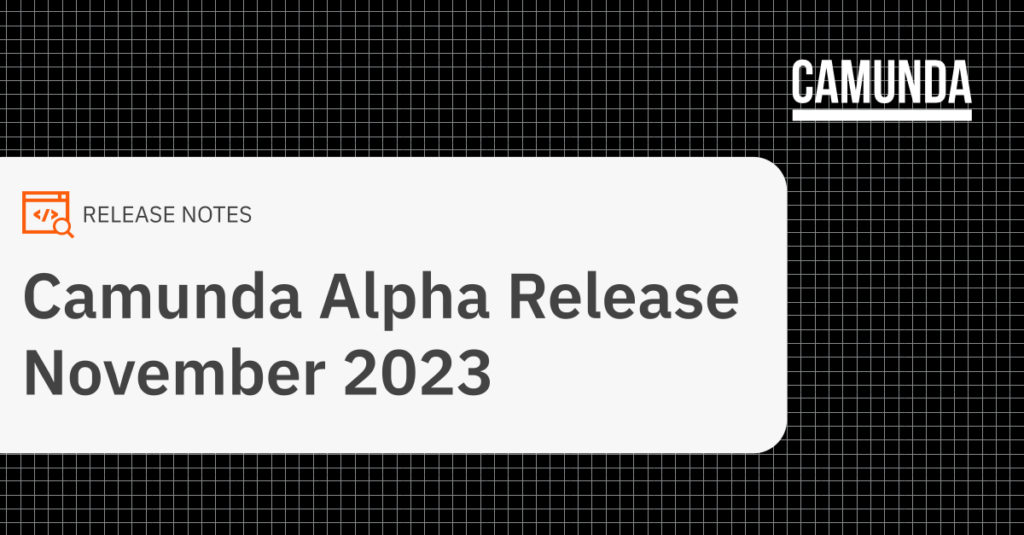We’re excited to share that the latest alpha release of Camunda is now live and available for download. For our SaaS customers who are up to date, you may have already noticed some of these features as we make these automatically.
Below you’ll find a quick summary of everything that’s new in Camunda for this month.
Web Modeler
Multi-arch Docker images for ARM 64 and AMD 64
Multi-arch images address the need to build your software for ARM 64 and AMD 64 which can limit your ability to build Docker images that can be deployed anywhere.
There are an increasing number of developers using these processors—for example, ARM 64 based Macbooks—that need to run a Camunda 8 stack locally. Camunda has introduced multi-arch Docker images for both ARM 64 and AMD 64 which will help developers with these architectures to run Modeler locally.
Append Preview
As a new user, there are so many things to learn and become familiar with in Camunda’s modeling tool. This can be anywhere from understanding what happens when they perform a certain action—such as clicking to add an element—to seeing how a diagram might change if certain actions are taken or even the results of an action.
Trying to explore all the possible operations without knowing which will modify or append something in the diagram, first-time users—or even less seasoned users—may be a bit overwhelmed with the options. Learning what the behavior to expect is essential to learning the modeling tool and building effective BPMN diagrams.
With this release, users, when modeling a diagram can see a preview of how the append operation advances the diagram.
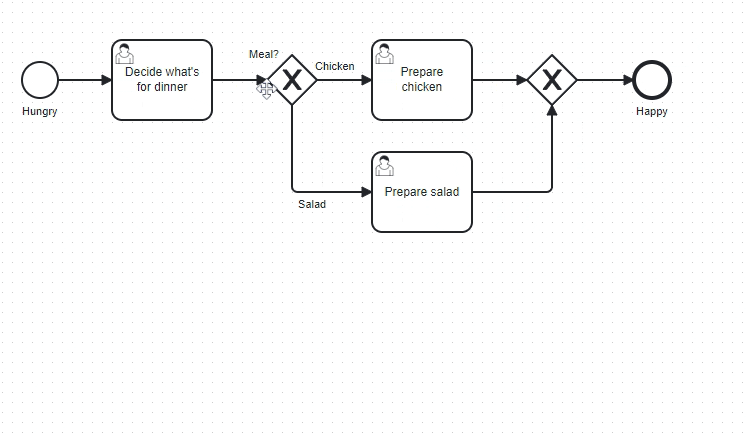
XML Editor
Previously, if there was an error or you wanted to edit the XML for your BPMN or DMN files while modeling, you would need to download the file, make the modifications in either Desktop Modeler or another tool and then replace the diagram.
With the newly added XML editor, you can edit the XML files directly during modeling. Simply click “{ } Edit XML” in the actions menu while modeling.
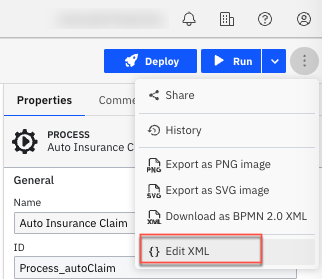
Proxy requests using HTTPS
Camunda has added support for proxying requests to an external Camunda identity instance using HTTPS. Before, Web Modeler Self-Managed always used an unencrypted HTTP connection when proxying requests to the Identity API—used to search for users that are about to be added to a project. The communication usually takes place within the same network and/or Kubernetes cluster; however, this back channel communication might not be possible depending on the Camunda installation. In this case or if unencrypted communication is not allowed for the application, Camunda now supports connections using HTTPS.
We hope you enjoy everything in the latest Web Modeler 8.4.0-alpha1 release!
Desktop Modeler
Preview create/append
This preview on hover is the same across Web and Desktop Modeler (see above).
Standalone form deployment and linking
Previously, developers had to complete a number of steps in order to synchronize changes made to a form—going back and forth between the BPMN editor and the form builder and then manually relinking the form. There was significant copy and paste of JSON which can be error prone. In addition, users would sometimes forget to update the process after making form changes.
Camunda’s recently introduced feature for standalone form deployment and linking represents engine concepts, and it’s now supported in the modeler for Camunda 8.4 diagrams. This enhancement enables the binding of a form through its ID, referencing the latest deployed version, as opposed to embedding the form JSON directly in the BPMN file.
Improved FEEL Editor
There is a new and improved FEEL expression editor that provides a simpler way to write and edit FEEL expressions. The popup editor updates in real time so users can write or edit expressions and see the changes reflected live. This dramatically improves their experience writing and editing expressions and speeds up implementing complex logic.
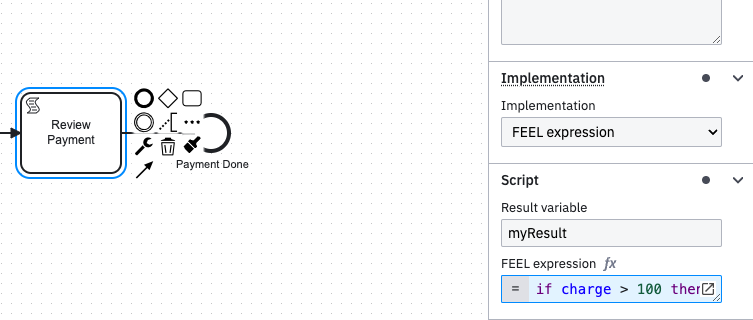
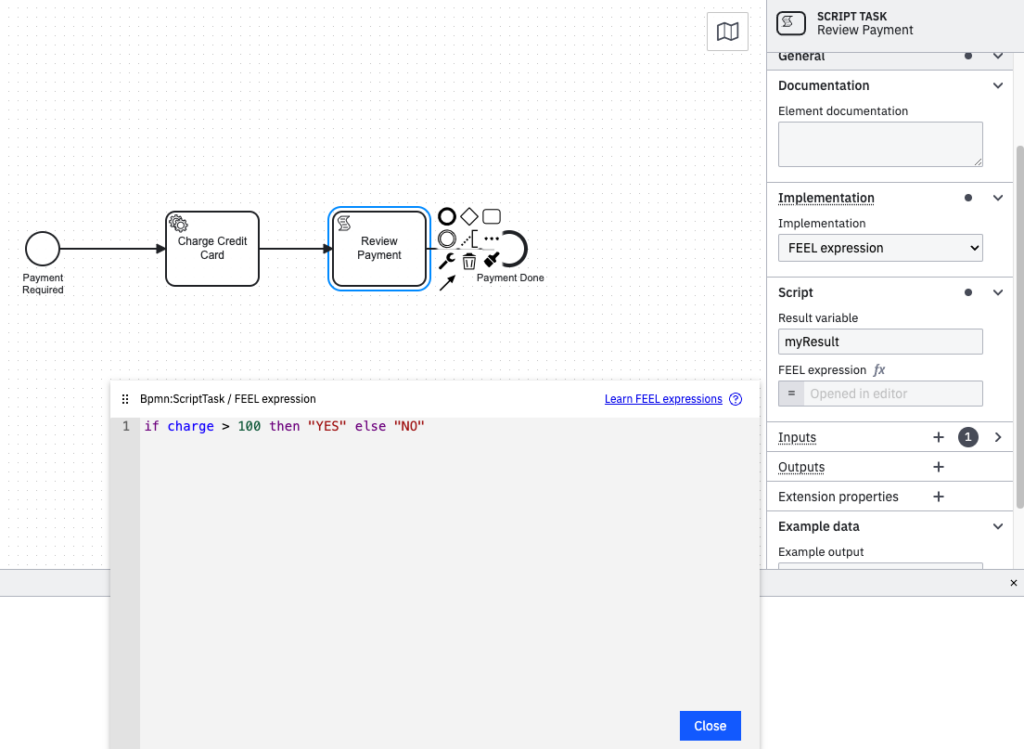
Check out the full release notes for this month’s Desktop Modeler 5.17.0 release right here.
Connectors
Camunda Connectors have been updated to provide additional functionality.
Reading headers and footer with Kafka Connector
The out-of-the-box Kafka Connector now supports the reading and writing of customer headers which are used to communicate meta information between services.
Docker images now switched to a read-only file system
Camunda’s Docker images are now read-only. It is common practice that container root filesystems are readonly and instead volumes are mounted where data is stored. This helps to enforce an immutable infrastructure strategy, allowing the container to write only on mounted volumes that can persist.
Error expressions support for custom variables
In addition to already provided error handling, Camunda now supports custom variables to enrich BPMN errors.
Prefixes supported for Secret providers
The environment variable based on the secret provider implementation of the Connectors runtime now supports a customizable prefix for environment variables when resolving secret values. If this is enabled, a secret prefix is defined, such as "MY_SECRET_PREFIX_" to be used with Connector secrets. The secret provider would lookup the value for
{{secrets.ZEEBE_AUTHORIZATION_SERVER_URL }} under "MY_SECRET_PREFIX_ZEEBE_AUTHORIZATION_SERVER_URL"
This feature allows for a dedicated secret namespace so that client credentials will not be exposed.
Role-based access control support for AWS Connectors
Role-based Access Control (RBAC) defines permissions based on an individual’s job function or “role” outside of AWS. Within AWS a role usually refers to an Identity Access Management (IAM) role. Camunda now supports RBAC for AWS connectors.
Check out the full release notes for this month’s Connectors 8.4.0-alpha1 release here.
Zeebe
Dynamic Scaling
Camunda now provides successful scaling of a running Zeebe cluster by adding another Zeebe broker and rebalancing partitions onto it. This allows Camunda to increase the maximum processing throughput of the cluster dynamically which was previously possible by vertically scaling Zeebe brokers.
The following screenshot provides an understanding of the benefit of dynamic broker scaling.
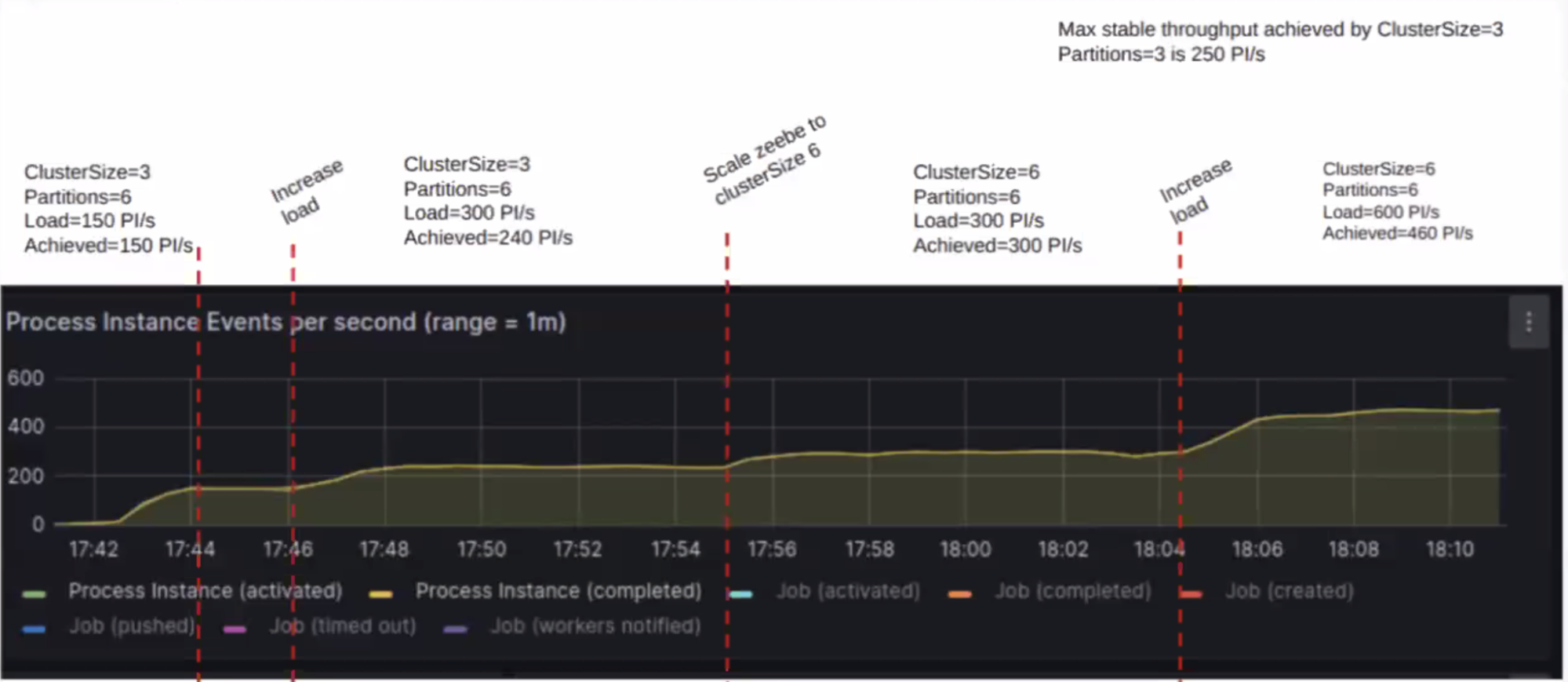
Signal events and resource deletion
Zeebe now supports multi-tenancy for BPMN signal events. In addition, resource deletion is now tenant-aware in support of multi-tenancy. Camunda has also improved our documentation to clarify supported and unsupported multi-tenancy features.
Check out the full release notes for this month’s Zeebe 8.4.0-alpha1 release right here.
Optimize
With this alpha release, Camunda has made small improvements to Optimize and provided bug fixes.
Operate
With this alpha release, Camunda has made small improvements to Operate and provided bug fixes.
Tasklist
Support for Standalone Form Deployment
We have made significant updates to our APIs and the Tasklist to enable the deployment of forms by the Desktop Modeler. As part of this enhancement, our API for retrieving forms now includes a ‘version’ field. This field is used to fetch deployed forms by their specific version. If the ‘version’ is set as null, the API will retrieve the highest version of the form deployed, or the corresponding embedded form. When exclusively using embedded forms, it’s essential not to set the ‘version’ to ensure the correct retrieval of the embedded form.
Camunda 7
You can find the latest release notes for the Camunda Platform 7.21.0-alpha1 on our forums. Check them out right here.
Thank you
We hope you enjoy the latest updates! If you have any feedback or thoughts, please feel free to contact us or let us know on our forum. As always, be sure to review the latest release notes and update guide before upgrading to ensure that everything keeps running as expected.
If you don’t have an account, you can try out the latest version today with a free trial.
